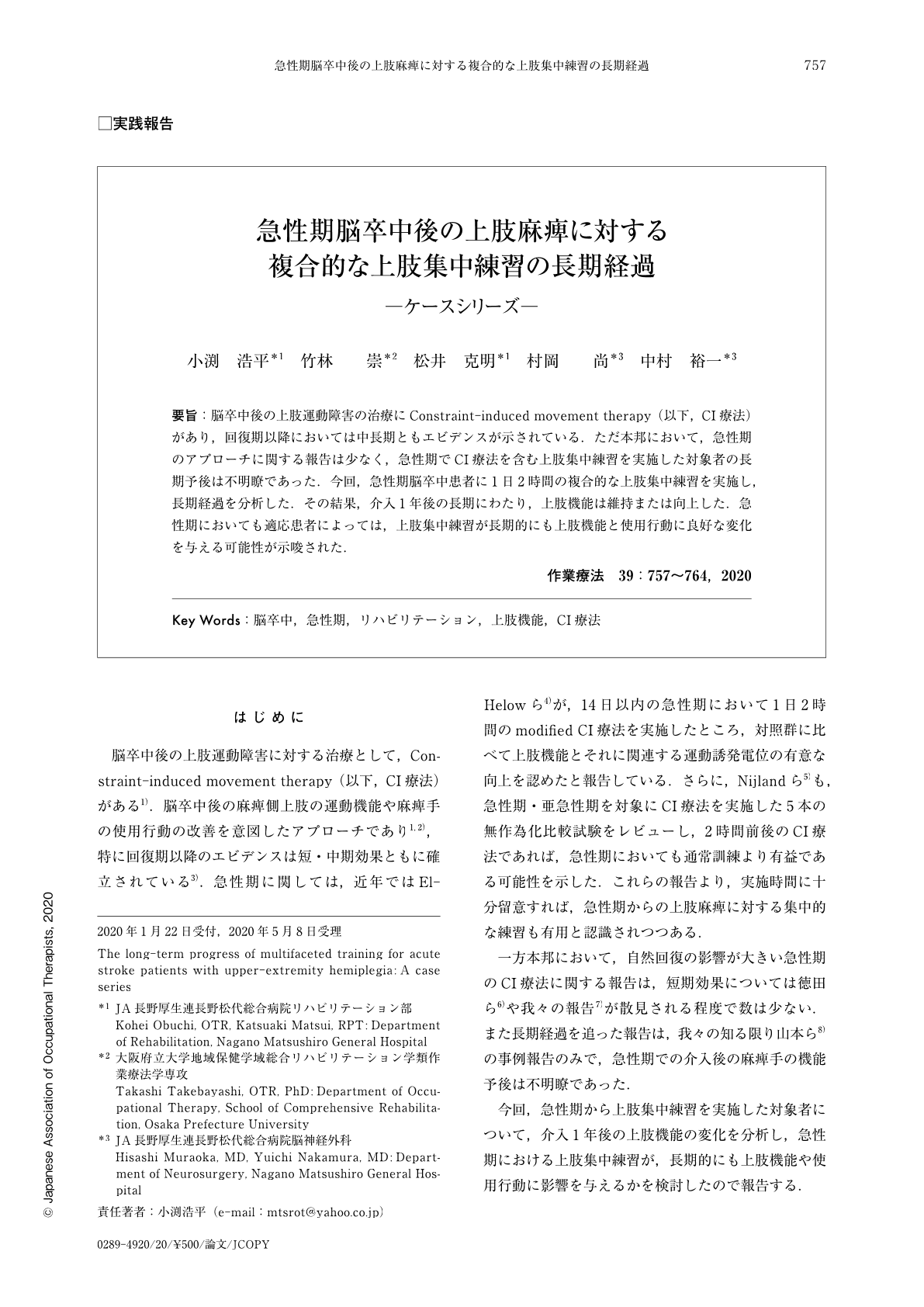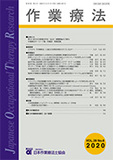Japanese
English
- 販売していません
- Abstract 文献概要
- 1ページ目 Look Inside
- 参考文献 Reference
- サイト内被引用 Cited by
要旨:脳卒中後の上肢運動障害の治療にConstraint-induced movement therapy(以下,CI療法)があり,回復期以降においては中長期ともエビデンスが示されている.ただ本邦において,急性期のアプローチに関する報告は少なく,急性期でCI療法を含む上肢集中練習を実施した対象者の長期予後は不明瞭であった.今回,急性期脳卒中患者に1日2時間の複合的な上肢集中練習を実施し,長期経過を分析した.その結果,介入1年後の長期にわたり,上肢機能は維持または向上した.急性期においても適応患者によっては,上肢集中練習が長期的にも上肢機能と使用行動に良好な変化を与える可能性が示唆された.
Constraint-induced movement therapy (CIMT) has successfully treated upper-extremity movement disorders after stroke, with mid- to long-term results after recovery. However, there are few reports on approaches in the acute phase in Japan, and the long-term prognosis of subjects who underwent intensive exercise including CIMT in the acute phase is unclear. In this study, we performed a complex upper-extremity intensive exercise for two hours a day for acute stroke patients and analyzed the long-term effects. As a result, the upper-extremity function was maintained or improved over a period of one year after the intervention. Intensive exercise of the upper-extremity could have a positive effect on upper-extremity function and use behavior in the even in the acute phase.

Copyright © 2020, Japanese Association of Occupational Therapists. All rights reserved.


